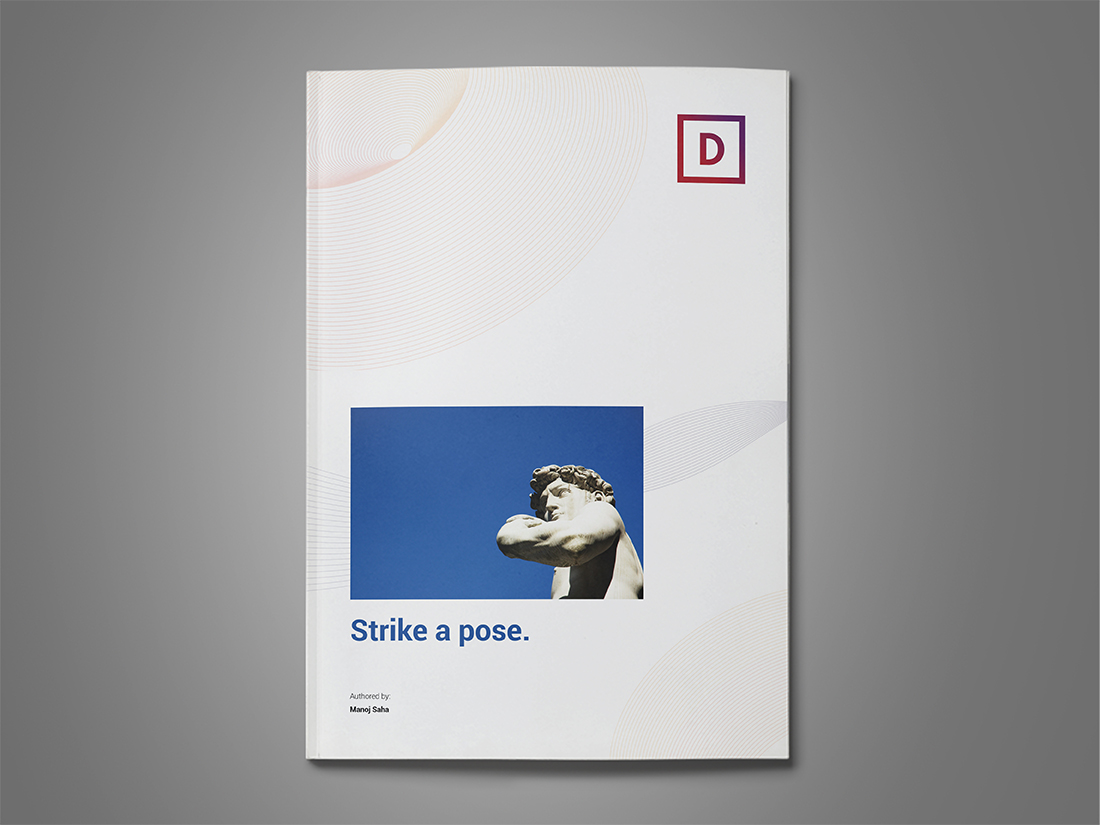Strike a pose.
You don’t have to be a Goliath to start producing integrated reports.
Even as a David, you can strike a pose.
As you approach the end of the current fiscal period, you must be hearing a lot about the Integrated Reporting Framework for annual reporting. As SEBI recommended the Top 500 companies of India to adopt this in 2017, you might be wondering if such an annual report would have any value for your company, even if you’re a relative David.
In essence, to take on the production of an Integrated Report requires any company’s management to ask and answer many fundamental questions of itself. An expectation that you will need to introspect can be daunting and time consuming.
Firstly, let us understand what an annual report looks like in terms of content and disclosures. You can easily check this out by speed reading many reports from Indian companies and global FTSE250 companies already adopting this standard. While these companies have successfully adopted to varying degrees, you will notice that it’s not so much about the depth of disclosures, but rather about having clarity on the causal impact of the various factors, that you use to produce value, on a wide range of stakeholders. You will observe that you will be expected to articulate your past and existing strategies, your understanding of and methods for circumventing risks, and discover new material KPIs to start measuring if you want your report to have gravitas.
In essence, to take on the production of an Integrated Report requires any company’s management to ask and answer many fundamental questions of itself. An expectation that you will need to introspect can be daunting and time consuming. So, you need to be prepared to inculcate “integrated thinking” within your organisation, which can be quite transformative in how one looks at its business and operates it. There can be huge upside for a company from new fundamentally good performance goals-posts that integrated thinking can help materialise.
As this realisation seeps in, one will have to accept that Rome wasn’t built in one day. Long-term habits and new thinking can take a long time to change, and one cannot underestimate the fact that it takes a systematic and calibrated approach to bring about transformative change in culture and thought processes. For some, this can take years and is dependent on the top management’s determination to adopt this state of mind. For a few that already possess such a holistic and transparent culture, it can still take months.
Any company secretary that believes that an report is merely a designing mandate is doomed to fail in this misadventure. The old adage “if you pay peanuts, you’ll get monkeys” holds particularly true in this service industry.
Producing an annual report also requires you to re-look at your budgets. Such reports require significantly more research, internal soul-searching, client interaction, articulation of multiple linkages, and a solid design approach to graphically present complex sets of information for easy absorption by readers. This necessarily requires you to work with an agency that possess several overlapping skill-sets – such as analytical thinking, investor perception research, content creativity, and infographics mapping capabilities. With such skill sets under one roof, the costs for producing an report is necessarily much more than the run of the mill strategic reports. Any company secretary that believes that an report is merely a designing mandate is doomed to fail in this misadventure. The old adage “if you pay peanuts, you’ll get monkeys” holds particularly true in this service industry. The task of mentally accepting new budget paradigms is made much easier when one considers the value of internal cultural shifts and their benefits.
Most importantly, because reports tend to serve ESG scoring particularly well, the adoption of reporting can widen access to a large universe of global investors that prize a company’s strong ESG parameters, as much as its financial performance. One can argue that producing an report today is a necessary investor relations pre-requisite, and that any company, even if they are not in the top 500, can expect a justifiable ROI from a calibrated and planned migration towards an integrated report.

Strike a pose.
To download and save this article.
Authored by:


Leave A Comment